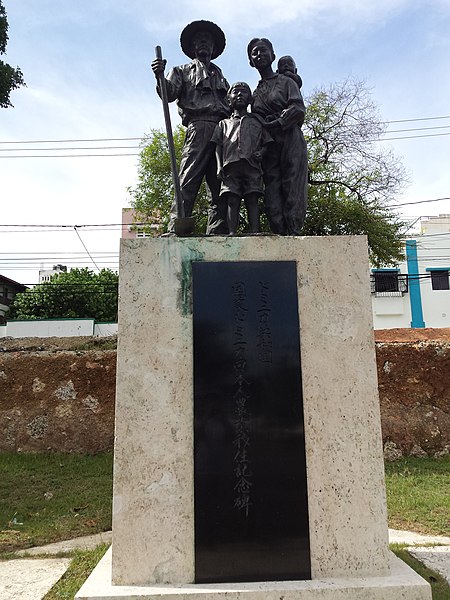Chinatowns in Latin America and the Caribbean
Chinatowns in Latin America developed with the rise of Chinese immigration in the 19th century to various countries in Latin America as contract laborers in agricultural and fishing industries. Most came from Guangdong Province. Since the 1970s, the new arrivals have typically hailed from Hong Kong, Macau, and Taiwan. Latin American Chinatowns may include the descendants of original migrants — often of mixed Chinese and Latino parentage — and more recent immigrants from East Asia. Most Asian Latin Americans are of Cantonese and Hakka origin. Estimates widely vary on the number of Chinese descendants in Latin America but it is at least 1.4 million and likely much greater than this.
Barrio Chino in Buenos Aires
Chinatown Gate in Havana
Entering Barrio Chino on Dolores Street.
On Dolores Street in Barrio Chino.
Asian Latin Americans are Latin Americans of Asian descent. Asian immigrants to Latin America have largely been from East Asia or West Asia. Historically, Asians in Latin America have a centuries-long history in the region, starting with Filipinos in the 16th century. The peak of Asian immigration occurred in the 19th and 20th centuries. There are currently more than four million Asian Latin Americans, nearly 1% of Latin America's population. Chinese, Japanese, and Lebanese are the largest Asian ancestries; other major ethnic groups include Filipinos, Syrians, Indians, and Koreans. Brazil is home to the largest population of East Asian descent, estimated at 2.08 million. The country is also home to a large percentage of West Asian descendants. With as much as 5% of their population having some degree of Chinese ancestry, Peru and Mexico have the highest ratio of any country for East Asian descent. Though the most recent official census, which relied on self-identification, gave a much lower percentage.

Chinese immigrants working in the cotton crop (1890) in Peru.
Chinatown, Lima-Peru.
The Liberdade neighborhood is a Little Tokyo of São Paulo.
Monument dedicated to Japanese Immigration in Santo Domingo (Paseo Bellini).








